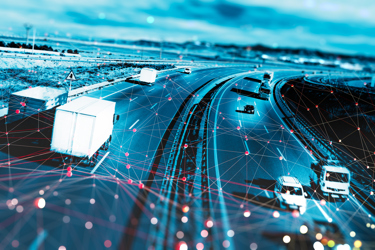The Future Of Connected Vehicles, Autonomous Vehicles, And Autonomous Driving

By John Oncea, Editor

Connected and autonomous vehicles have the potential to decrease car accidents by enabling wireless communication between vehicles, infrastructure, and the personal devices of drivers. Their future is bright, but just how much so?
For more than 20 years the U.S. Department of Transportation (DOT) has pursued efforts to advance the deployment of connected vehicle (CV) technologies, notes the U.S. Government Accountability Office (GAO). The implementation of these technologies could significantly reduce crashes and improve traffic efficiency and, as of September 2022, transportation agencies in 38 states held licenses from the Federal Communications Commission (FCC) to use CV technologies. Some transportation agencies have deployed CV technologies on roadside infrastructure, but few automakers have produced vehicles equipped for exchanging safety messages.
But that doesn’t mean they aren’t trying. A Juniper Research study is forecasting the number of CVs on the road globally will reach 367 million by 2027, a 91% increase from the 192 million in service today. The researchers predict commercial vehicles will only account for 20% of connected vehicles worldwide, representing a small increase from the 16% expected by the end of the year.
They further found commercial vehicle design is not leveraging connectivity beyond simple emergency call features and basic connected infotainment systems, although this is changing, as businesses prioritize tracking and logistics capabilities.
Let’s take a look at some of the expectations – as well as the challenges – waiting for CVs and their not-too-distant cousins, autonomous vehicles (AVs).
Let’s Sync Up
CVs and AVs are, according to Cprime, sometimes thought of as interchangeable concepts but AVs (also known as self-driving cars) behave independently guided by ultimate safety suggestions while CVs lack that functionality. This is because CVs come equipped with specific data transmission technologies like an Internet of Things (IoT) device, as well as sensors, computer vision, wireless communication, and data analysis features embedded. AVs are outfitted with the same data transfer and programming possibilities as CVs, but they are capable of making independent decisions and behaving accordingly.
Oh, and CVs exist and are in use while AVs … not so much. So, yeah, that’s a big difference.
Both cars bring unique benefits and cause for concern. According to Cprime, CVs provide better safety, an optimized driving experience, and new business models but they also come with user and safety concerns.
AVs on the other hand will increase safety beyond what CVs are providing while also saving cost and time for the user all while providing more independence. The concerns are the same as those that come with CVs, as well as worries about predictability. Add in the lack of consumer confidence, the ability for the vehicle to be manipulated by any security flaw, and the fact that 2.9 million driving jobs could be lost and it appears as if AVs have a difficult path to success.
Let’s Gaze Into The Crystal Ball
Lumping CVs and AVs together and calling it autonomous driving, McKinsey & Company writes this technology has the potential to transform transportation, consumer behavior, and society at large. “Because of this, AD could create massive value for the auto industry, generating hundreds of billions of dollars before the end of this decade,” McKinsey research shows. “To realize the consumer and commercial benefits of autonomous driving, however, auto OEMs and suppliers may need to develop new sales and business strategies, acquire new technological capabilities, and address safety concerns.”
The auto industry is also poised to make billions off of AD. A 2021 McKinsey consumer survey revealed people want access to AD features and are willing to pay for them. “Vehicles with lidar-based Level 2+ (L2+) capabilities contain approximately $1,500 to $2,000 in component costs and even more for cars with Level 3 (L3) and L4 options.” This demand at those costs could generate between $300 billion and $400 billion in the passenger market by 2035.
Other industries are going to see disruptions as a result of the rise of AD including roadside assistance and repair. The expected reduction in car accidents and collisions will reduce the need for these services, potentially affecting businesses in those industries. Additionally, insurance premiums for individuals with self-driving cars may become more affordable as they would no longer be held liable for accidents caused by the AD system. This may result in the emergence of new insurance models for autonomous travel in the business-to-business sector.
Several car manufacturers are currently testing innovative insurance plans. By analyzing driving patterns through autonomous technology, these companies can offer customized plans to their customers. As the OEMs are in control of the AD system and the data it produces (including drivers' real-time performance), they can provide highly personalized insurance policies. This gives auto companies a notable edge over external insurance providers.
